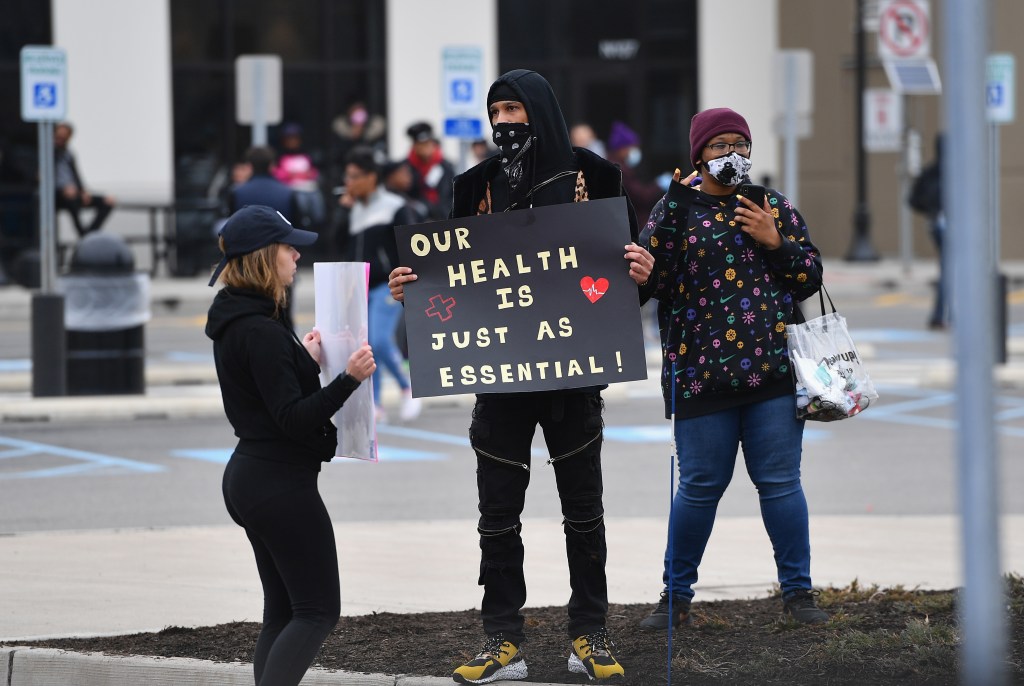In March, when the first wave of COVID-19 cases began to surge across the country and governors imposed strict lockdown orders and restrictions on states, tech workers embarked on a wave of coordinated strikes, walkouts, sickouts, and protests.
At least 43 of 117 recorded actions led by tech workers since the start of 2020, according to the tech worker-led data project Collective Action in Tech, were related to COVID-19 concerns, such as protective gear, sick days, and hazard pay.
Videos by VICE
New data from Collective Action in Tech suggests that surges in COVID-19 cases and government-imposed restrictions over the past year have sparked tech worker protests and strikes—particularly among blue-collar workers—Amazon warehouse workers, grocery delivery gig workers, and contractors. According to the data, most of these 43 actions took place between March and May—during the first wave of COVID-19 deaths and lockdowns in the United States—with smaller upticks again in July and October.
The majority of COVID-19 related actions have been organized by low wage tech employees, rather than office workers. Some of the first recorded protests organized by tech workers around COVID-19 related concerns began in early March. At the time, the Silicon Valley worker non-profit Gig Workers Rising launched a petition drive calling on lawmakers to make the largest gig economy companies to provide workers with sick pay. Similarly, Amazon warehouse workers in New York City organized to demand the company provide sick pay to contractors. Throughout the spring, Whole Foods employees, Amazon warehouse workers, and Instacart and Shipt grocery delivery gig workers staged multiple strikes, walkouts, and sick outs.
More than 80 percent of COVID-related tech worker actions have been held in-person—suggesting essential workers who already had to show up to work found that they could put the greatest pressure on tech companies in person. The most popular form of action has been strikes and protests, followed by open letters.
Meanwhile white collar tech workers have transitioned to online forms of protest, such as petitions and virtual walkouts, while they’ve been working from home. In June, Facebook employees protested against the company’s handling of Trump’s hateful social media posts, by staging a virtual strike. Then in August, Pinterest employees led a virtual walkout protesting racial and gender discrimination. The increasing popularity of virtual protests and strike actions, favored by white-collar workers during the pandemic, could influence the tools tech workers use to protest in a post-COVID-19 era.
As a new wave of COVID-19 cases surges across the United States—with Chicago, California, Texas, North Dakota, and Washington imposing new restrictions and lockdown orders this week, Americans will likely rely heavily on the labor of Amazon warehouse workers as well as food and grocery delivery gig workers to do their shopping in the coming months. And if history repeats itself, another wave of strikes, actions, and protests led by blue-collar tech workers could soon be underway.




